If you knew nothing about the gaudy, neon circus of professional wrestling, it’s dark underbelly and its painted face, there was a crash course in January. A few days after Royal Rumble, one of the biggest events in the wrestling calendar, Netflix announced that it had agreed a 10-year-deal, worth a staggering $5 billion, to stream WWE’s weekly flagship programme, Raw.
“WWE is sports entertainment, which is right in the sweet spot of our sports business – the drama of sport,” said Ted Sarandos, Netflix’s co-chief executive. For context, Apple paid precisely half that amount to secure the rights to Major League soccer.
It doesn’t matter that one of these entities is a bona fide sport, and the other is genetically modified. The difference in the bottom-line numbers reflected the disparity in audience reach, and the extraordinarily broad demographic of WWE’s viewership: 22 per cent between the ages of 2 and 17, 30 per cent over 50, the rest in-between. In an age when television and streaming are frantically chasing a spoiled and splintered audience, WWE retains a remarkable cross-generational appeal.
That was the good news. In the same week Vince McMahon, the co-founder of what would become WWE, and executive chairman of its current owners, TKO, was accused of sexual assault and sex trafficking in a lawsuit filed by a former WWE employee. McMahon described the lawsuit as a “vindicative distortion of the truth,” but a couple of days later resigned from the board of TKO. He denies the accusation.
The chilling part is that McMahon has been stalked by accusations of this nature for more than 30 years. In 1992, Rita Chatterton, the first female referee for what was then called the World Wrestling Federation [WWF] appeared on the talkshow “Geraldo” to claim that she had been sexually assaulted by McMahon six years earlier.
McMahon rejected the allegations and filed a lawsuit against Chatteron, Geraldo Riveria and others – which he later withdrew. In 2022, however, Chatteron availed of the Adult Survivors Act in New York to file a lawsuit against McMahon; under the legislation, the statute of limitations on sexual assault cases were lifted for a year. McMahon settled the case without any admission of guilt.
In the same year the Wall Street Journal reported that McMahon “agreed to pay more than $12 million over the past 16 years to suppress allegations of sexual misconduct and infidelity, an amount far greater than previously known.” In light of those revelations McMahon was pushed out of WWE, but not for long.
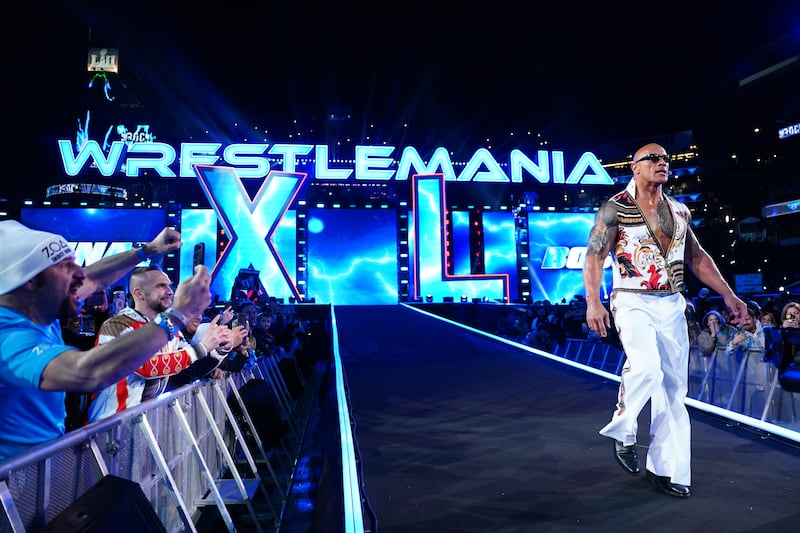
These stories form a sordid thread in the life of an organisation that McMahon bought from his father in 1982. In the 1990s WWE was rocked by what was called “the ring boy scandal,” in which, according to the New York Times, “high-ranking wrestling officials were accused of sexually assaulting young men who performed menial tasks for the organisation.”
That affair, and all the others, came under the spotlight of “Mr McMahon” a Netflix docuseries on wrestling’s most powerful impresario. Phil Mushnick, who covered the story for the New York Post, described it as a “paedophile ring”.
“These were kids being sexually abused on McMahon’s watch,” Mushnick said in the docuseries. McMahon initially co-operated with the filmmakers but withdrew after the sex trafficking allegations. Very little of the content in “Mr McMahon” though qualified as a revelation, and that was the extraordinary thing. WWE had grown into a billion-dollar company while the head of the organisation crossed redline boundaries in his personal behaviour with apparent impunity.
“I started watching “Mr McMahon” with almost no context about professional wrestling or McMahon’s past,” wrote Jessica Grose, in a long review for The New York Times. “For me, what was particularly shocking about the documentary’s long litany of sexual abuse allegations is that none of it was a secret. These accusations were publicised in real time – on national talkshows, in tabloids, in wrestling trade publications and via lawsuits – over decades.
“McMahon was able to skate away from accusations against him and his organisation for two reasons. He was making boatloads of money for a lot of people and wrestling is seen as sordid in the first place, something existing outside mainstream, respectable mores. As Mushnick said in the documentary, ‘This was the biggest guy on cable TV. Nobody wanted to look a little deeper.’”
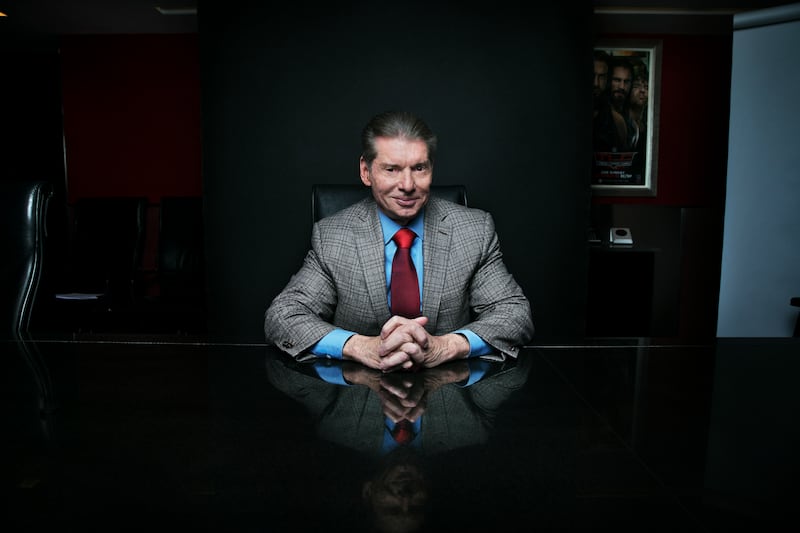
Wrestling’s place in American popular culture was cultivated by McMahon, his troupe of muscle-bound, garishly clad wrestlers, their faux-fights and absurd, black-and-white storylines. At the zenith of its popularity, around the turn of the century, Gallup estimated that 18 per cent of Americans counted themselves as wrestling fans – roughly 50 million people.
This was during the “Attitude Era,” an umbrella branding for harder edged output at that time. One of the stars of that period was “the beer-swilling, leather-wearing, foul-mouthed Stone Cold Steve Austin,” according to Vinson Cunningham, in a profile of McMahon for New Yorker magazine.
“The matches were no longer between good guys and bad guys,” wrote Cunningham, “but between bad guys and worse guys.” Some of the storylines were shot through with racist stereotyping and offensive tropes. On top of everything else, McMahon was essentially the creative director. The shows followed his direction.
As WWE comes to Dublin, with a full house expected in the 3Arena on Sunday night, you wonder why so many people are attracted to it? Why are so many people entranced by this cartoonish and sometimes putrid spectacle? Why have so many people joined this global congregation of make-believers?
The former wrestler Bret Hart reckoned that fans wanted “to let out their aggression, while also watching a morality play,” a hopelessly romanticised version of the reality. McMahon, though, characterised it in transactional terms. “Our business is no different than a play, a movie, books,” he said. In other words, they were selling a story.
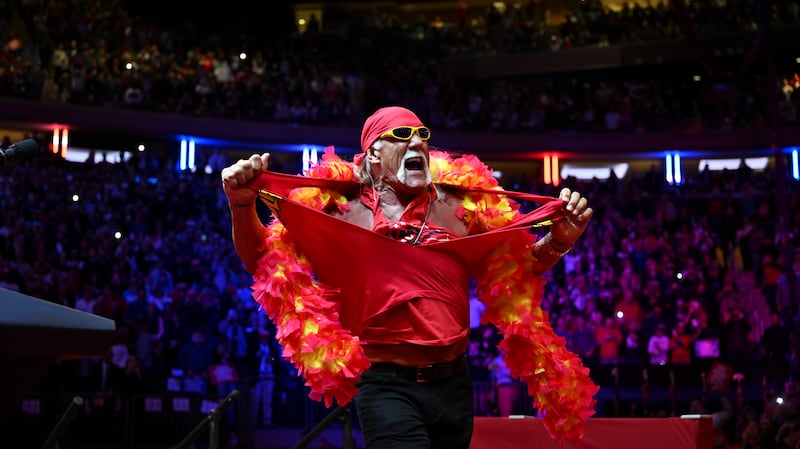
The unwritten contract between this strand of performative wrestling and its audience is called “kayfabe.” It is defined as “the tacit agreement between professional wrestlers and their fans to pretend that overtly staged wrestling events, stories and characters are genuine.” That is the central conceit of the show.
Kayfabe had existed long before WWE or WWF. Professional wrestling began as a circus sideshow in the late 19th century when, just like now, the performers were following a script.
“Enthusiasts didn’t care that it wasn’t on the level,” wrote Abraham Josephine Riesman, author of a biography of McMahon. “They loved the personalities and the spectacle, and they longed to lose themselves in the illusion. They wanted to believe. Whether out of pride or shame, fans would rarely acknowledge to detractors that their beloved ‘sport’ was fixed. To defend its honour, they upheld the lie that it was real. Even if fans didn’t know the word, they were complying with kayfabe.”
McMahon, though, recognised that kayfabe wasn’t good for every part of the business. In the late 1980s he wanted the product reclassified as “sports entertainment,” trying to sidestep the more stringent health regulations that governed boxing and other combat sports, and at the same time seeking relief from the taxes that promoters of sports events were liable to pay. The issue came to a head before the New Jersey Senate in 1989.
“The promoters of professional wrestling have disclosed that their terrifying towers in spandex tights, massive creatures like Bam Bam Bigelow, Hulk Hogan and Andre the Giant, are really no more dangerous to one another than Santa Claus, the Easter bunny and the Tooth Fairy,” reported The New York Times, gleefully.
“But please don’t repeat this. Millions of grown men and women just don’t want to know. In an attempt to free their exhibitions from regulations that apply to boxing and other sports that cause serious injury, spokesmen for the World Wrestling Federation testified before New Jersey Senate that professional wrestling was just ‘entertainment’ and that participants are trained to avoid serious injury.”
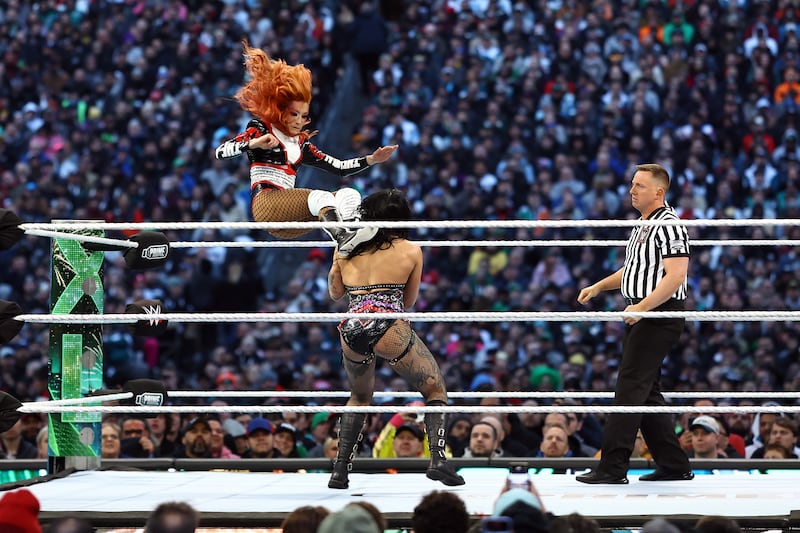
At the centre of the spectacle, though, are athletes. Even though the outcome of the bouts are predetermined, and the manoeuvres in the ring are heavily choreographed and rehearsed, the ability to execute them requires a significant level of power and agility.
Dave Hanratty, host of the No Encore podcast, and a wrestling enthusiast, tried to explain the dynamic in an interview on RTÉ radio during the summer. “The thing about wrestling is it is a dance,” he said, “it is a performance. But these athletes have to trust each other when they do these moves, otherwise something will go wrong.”
Being able to withstand the prat falls and stylised hits demands a high level of endurance and tolerance for pain. The training regimes are punishing, there is no off-season, and for those who succeed in the business, the workload is heavy and relentless. The wear and tear is real.
Wrapped up in all of this is body image. Outsized muscles are not just the tools of the trade, they are integral to the pageant. Generations of wrestlers have abused steroids in pursuit of bulk and become addicted to painkillers in search of relief. Too many have died in middle age, or younger.
According to a 2014 study by Eastern Michigan University, examining professional wrestlers who were active between 1985 and 2011, mortality rates were nearly three times greater than for men in the wider population. Heart failure was the most common cause of death, but drug overdose and death by suicide were also high on the list.
“Wrestlers who competed in the 1970s and 80s were also living and partying like rock stars,” the New York-based wrestling journalist Eric Cohen told the BBC. WWE claims that habits have changed, extolling the effectiveness of their random drug testing programme. Nobody, though, believes that wrestling is clean.
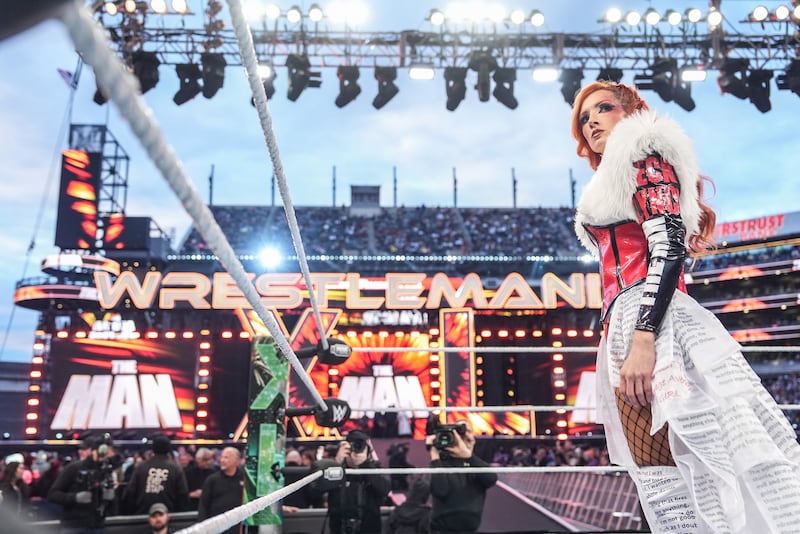
For women in wrestling, body image was a more complicated issue. In his RTÉ interview Hanratty said that some female wrestlers “were encouraged to get breast implants or plastic surgery in order to get on television or get more money and become a star.”
Rebecca Quin, whose wrestling name is Becky Lynch, was the first Irish female wrestler to reach the top of WWE, and in her terrific autobiography she wrote about the pressure she felt, very early in her career, to alter her appearance. Long before her breakthrough with WWE, she was offered matches in North Carolina by a company called Ring Angels. Part of the deal was a lingerie shoot for $150.
“It was completely against anything I had set out to do,” she writes. “I wanted to prove that I should be looked at for my technical ability and had never wanted to sexualise myself lest that take away from my credibility as a wrestler. I did it anyway. In my confusion, my heartbreak, my wanting to make it to the top and feel good about myself I justified it [by saying], All the WWE girls do it; it’s just part of the job.
“Instead of realising that I didn’t need to sell myself as a hot little sex kitten, I put more emphasis on my body. As if that were the only thing that could lead me to greatness. I cut my calories in half and pushed the intensity at the gym. It wasn’t long until I started seeing big changes in both my body, my mood (not for the better), and my pure obsession with the physical.”
She quit wrestling for a while before making a comeback in Canada. Medication was part of the process. “As my body fat decreased, the pain from wrestling increased,” she writes. “Hitting the mat and ropes with so little padding to cushion the impact left me feeling tender for days. Not to mention I was wrestling infrequently now, so my body was losing is calloused shell that protected me from the pain of falling down for a living.
“When the fat loss started to slow down, I cut my calories again to get to the next stage. Emaciation was the name of the game. I was popping ephedrine like it was Skittles. When that stopped working, I was supplied with T3, which is meant to speed up your thyroid function. But it can also be very dangerous and wreak havoc on your thyroid once you come off it. Spoiler: it did. I took another tour in Japan in my wilted state.”
Quin made it to the top of the game. In 2016, not much more than a year after the joined the roster, she won her first WWE title. Or was awarded the title. Or was chosen by acclaim. The belt had apparently been destined for Nikki Bella, who had just recovered from a career-threatening neck injury, but the crowd started chanting Becky Lynch’s name, and WWE’s business model revolves around pleasing the crowd.
Donald Trump cosied up the WWE brand many years ago. WrestleMania IV and WrestleMania V were both staged at a Trump hotel in New Jersey, and in 2007 he made his first appearance in the ring at WrestleMania XXIV. McMahon challenged Trump to a “Battle of the Billionaires,” with the “winner” shaving the head of the “loser.”
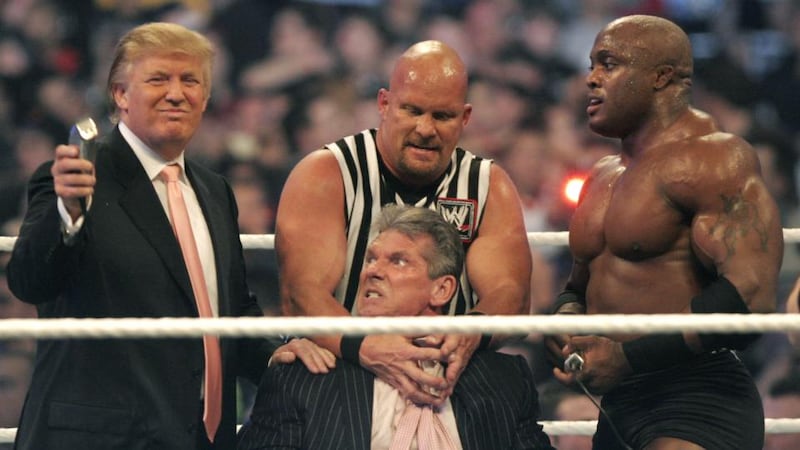
“Trump played an even more brightly caricatured version of himself,” wrote Cunningham in the New Yorker magazine, “a rich asshole foil to the ultimate rich asshole, Mr McMahon – Vince McMahon’s long running WWE character, perhaps the most well developed ‘heel’ (wrestling speak for ‘villain’) in history.” Trump “won” and McMahon lost his hair. Really.
At another WWE event, Trump boasted about his wealth before the audience was showered with dollar bills, dropped from the rafters, most of which turned out to be fake. Trump and McMahon became friends, and Trump was inducted into WWE’s Hall of Fame. Maybe not coincidentally, when Trump was elected president, McMahon’s wife Linda was part of his White House cabinet for two years.
After Covid hit in 2020, WWE had friends in the right places. A week after Florida went into lockdown, the Republican governor of the state, Ron DeSantis, categorised WWE as an “essential business.” This meant that WWE could continue making content for NBC and Fox.
[ Dave Hannigan: Trump’s long links to wrestling’s carnival of buffooneryOpens in new window ]
As Dave Hannigan pointed out on these pages, the network of back-scratching wasn’t difficult to decipher. Trump’s support had been critical to DeSantis’ election in 2018, and on the day that WWE was released from Covid restrictions, Linda McMahon announced that the Trump re-election campaign would be spending $18.5 million in advertising in Florida.
Just like in one of WWE’s storylines, the villains were centre stage.
WWE Live!, 3Arena Dublin, Sunday, November 3rd
- Sign up for push alerts and have the best news, analysis and comment delivered directly to your phone
- Join The Irish Times on WhatsApp and stay up to date
- Listen to our Inside Politics podcast for the best political chat and analysis




















